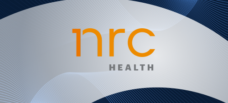Overview
-
Pipeline growth
Lead generation identifies and converts engaged audiences into qualified sales leads.
-
Engagement-driven
ON24 enables marketers to capture intent signals and track engagement behavior across digital experiences.
-
Data-powered
Combines first-party analytics and interactive webinar data to accelerate conversions.
What is Lead Generation?
Lead generation is the process of identifying, attracting, and converting potential prospects into qualified leads that can be nurtured through the marketing and sales funnel. In the ON24 Platform, lead generation is driven by engagement—how prospects interact with webinars, on-demand content, and digital experiences.
Unlike traditional outreach methods, ON24’s approach to lead generation focuses on first-party engagement data. Every attendee interaction—from poll responses to content downloads—helps marketers understand intent and prioritize follow-up. This data transforms passive audience engagement into actionable insights, enabling sales teams to reach out at the right time with the right message.
Lead generation is a critical part of any B2B marketing strategy, empowering teams to grow their pipeline while maintaining personalized, value-driven communication continuously.
Why it matters
- Accelerates pipeline creation: Captures high-quality leads directly from digital experiences.
- Provides actionable data: Engagement insights guide how and when to follow up with prospects.
- Supports personalized outreach: Identifies what content resonates most with potential buyers.
- Improves marketing ROI: Turns attendee participation into measurable business outcomes.
How it’s used
- Host interactive webinars through ON24 Webcast Elite to attract and engage new prospects.
- Capture engagement metrics—such as viewing time, poll participation, and resource downloads—to qualify leads.
- Integrate ON24 with CRM and marketing automation platforms for seamless lead routing.
- Use personalized follow-up content, such as on-demand experiences, to continue nurturing leads post-event.
- Leverage ON24’s engagement analytics to track lead behavior and identify high-intent signals for sales teams.
- Align lead generation programs with marketing campaigns to build long-term audience relationships.
Key benefits
- High-quality leads: Engagement-based data ensures leads are relevant and sales-ready.
- Enhanced targeting: Identify audience interests and behaviors to tailor content accordingly.
- Integrated systems: Syncs data with CRMs and automation tools for efficient pipeline management.
- Stronger conversion rates: Nurtures prospects with personalized, timely outreach informed by real engagement.
- Data-driven decisions: Uses analytics to optimize content performance and lead qualification criteria.
- Sustainable pipeline growth: Supports continuous engagement and relationship building throughout the buyer journey.
Frequently Asked Questions
- What is lead generation in the ON24 Platform?
- It’s the process of attracting, engaging, and converting prospects through interactive digital experiences like webinars and content hubs.
- How does ON24 help marketers generate leads?
- ON24 captures engagement data from audience interactions—such as polls, downloads, and chat participation—to identify qualified leads.
- Why is engagement data important for lead generation?
- Engagement data provides direct insight into a prospect’s interests and intent, allowing for more accurate lead scoring and follow-up.
- Can ON24 integrate with CRM or marketing automation systems?
- Yes. ON24 integrates with platforms like Salesforce, Marketo, HubSpot, and Eloqua to streamline lead capture and routing.
- What are the benefits of using ON24 for lead generation?
- ON24 provides a complete engagement ecosystem that turns digital interactions into measurable, pipeline-building outcomes.
Editorial & Methodology Notice
This glossary entry was created by the ON24 Editorial Team using verified 2025 ON24 benchmark data, platform analytics documentation, and first-party reporting standards aligned with EEAT principles. Updated: October 2025.


